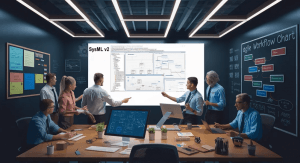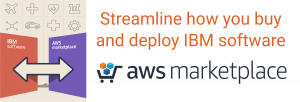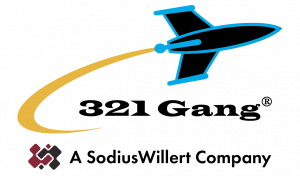Integrating SysML v2 with Agile Methodologies for More Efficient Systems Engineering
Introduction

Agile methodologies are used to drive faster development cycles and there is a need to integrate these approaches into systems engineering processes. Systems Modeling Language (SysML) is one of the tools used in systems engineering to define, analyze, and document complex systems. With the release of SysML v2, the language has evolved to address modern development needs more effectively. When combined with agile methodologies, SysML v2 can enhance systems engineering practices by improving clarity, collaboration, and iterative development.
This blog post discusses the integration of SysML v2 with Agile frameworks, focusing on how the combination can foster better systems engineering. This post will cover the benefits of integrating SysML v2 with agile practices, particularly in terms of clearer requirements, improved collaboration among teams, and accelerated iteration cycles.
The Evolution of SysML: From SysML v1 to SysML v2
SysML, a graphical modeling language, was developed as an extension of the Unified Modeling Language (UML) to address the needs of systems engineering. Although SysML v1 has been used for over a decade, its adoption has been limited due to issues like unclear syntax, imprecise meaning, and difficulty integrating with agile methods. SysML v2 was designed to overcome these limitations. It introduces a more structured and formal approach to modeling systems, improving both the language and its ability to integrate with other tools and methodologies. Some of the key improvements in SysML v2 include:
- Enhanced Semantics: SysML v2 provides clearer and more consistent semantics, making it easier for engineers to understand and interpret models.
- Improved Notation: The language’s syntax is simplified, reducing the burden on system engineers and improving communication between technical teams.
- Better Tool Integration: SysML v2 is designed to be more easily integrated with other modeling tools and software development environments, including those used in Agile development.
- Enhanced Traceability: SysML v2 improves requirements traceability, making it easier to link system requirements to design elements and test cases.
These improvements make SysML v2 more compatible with Agile practices, enabling systems engineers to work iteratively and collaboratively while maintaining the rigor of traditional systems engineering.
Agile Methodologies in Systems Engineering
Agile methodologies originally designed for software development, have been adopted across other domains, including systems engineering. Agile emphasizes flexibility, collaboration, and customer feedback, allowing teams to respond quickly to changes and deliver value incrementally. The key principles of Agile that are beneficial for systems engineering include:
- Iterative Development: Systems are developed in small, manageable increments, allowing for frequent adjustments based on feedback and new insights.
- Cross-functional Teams: Agile promotes collaboration among various disciplines such as hardware, software, and systems engineering, ensuring that teams work together to meet the system’s requirements.
- Customer-Centric Focus: Agile methodologies emphasize delivering value to the customer, ensuring that the final product meets the needs of stakeholders.
- Continuous Feedback and Improvement: Agile encourages constant testing, validation, and refinement of the system to improve quality and performance.
Integrating Agile methodologies with systems engineering has been challenging, primarily due to the complexity of systems engineering tasks and the traditional, waterfall approach to system design. The need for documentation, formal design, and long-term planning has often been at odds with Agile’s short iterations and flexibility. SysML v2 can help bridge this gap.
How SysML v2 Enhances Agile Systems Engineering
1. Clearer Requirements and Traceability
One of the key benefits of SysML v2 in an Agile environment is its ability to support clearer and more precise requirements. In an Agile setting, where requirements can evolve throughout the development cycle, having a structured way to capture and update requirements is critical. SysML v2 improves traceability by allowing teams to:
- Link requirements to design elements: SysML v2 allows for explicit relationships between system requirements and system models, making it easier to track how changes in requirements affect the system’s design.
- Model requirements evolution: As Agile projects involve frequent iterations and changes, SysML v2 makes it easier to update and modify requirements models, ensuring that changes are documented and traceable.
- Maintain version control: SysML v2 supports versioning, enabling teams to track the history of changes to requirements and ensure that all team members are working from the most current information.
These capabilities help systems engineers maintain clarity around requirements as they evolve, making it easier to ensure that the system meets stakeholders’ needs.
2. Improved Collaboration and Communication
Agile emphasizes collaboration among cross-functional teams, and SysML v2’s improved syntax and tool integration can greatly enhance this aspect of systems engineering. With SysML v2, teams can:
- Share models easily: SysML v2’s formalized approach allows for better integration with tools that support collaborative environments. Cloud-based tools and collaborative platforms can provide real-time access to models, enabling better collaboration across teams.
- Collaborate on the same models: Agile teams often work in parallel on different aspects of the system. SysML v2’s support for modular design enables teams to collaborate on different components of the system, ensuring that each part is aligned with the overall system design.
- Visualize system behavior: SysML v2’s graphical notation, along with its improved semantics, allows teams to better visualize system behavior, dependencies, and interactions. This enhances communication between systems engineers, software developers, and other stakeholders, ensuring that everyone is aligned and understands how their work contributes to the larger system.
By improving collaboration, SysML v2 enables Agile teams to work more effectively, making it easier to share knowledge and drive the system’s development forward.
3. Faster Iteration Cycles
SysML v2’s clear notation and formal semantics speed up iterations by reducing ambiguity and clarifying design decisions early. In Agile iterations and rapid prototyping are key to delivering value in short timeframes. SysML v2 can:
- Accelerate decision-making: By providing a clear and consistent way to represent system behavior and requirements, SysML v2 enables teams to make informed decisions more quickly, reducing the time spent on design validation and updates.
- Facilitate continuous validation: Agile systems engineering often involves frequent testing and validation. SysML v2’s improved ability to link requirements to design and test cases ensures that testing is aligned with the evolving system design, facilitating continuous validation and reducing the risk of defects.
- Support incremental development: SysML v2 allows systems engineers to break down the system into smaller, manageable components, supporting the incremental development model of Agile. This enables faster iterations and allows teams to release working parts of the system earlier in the process.
The result is a faster, more flexible systems engineering process that aligns with the principles of Agile development.
Summary
Integrating SysML v2 with Agile methodologies offers advantages in systems engineering, particularly in terms of clearer requirements, improved collaboration, and faster iteration. SysML v2’s enhanced semantics, simplified notation, and tool integration capabilities make it a good companion for Agile development, enabling systems engineers to work more efficiently and collaboratively. By adopting SysML v2 alongside Agile practices, organizations can potentially reduce complexity, improve alignment across teams, and deliver high-quality systems that meet evolving requirements.
Currently, the integration of SysML v2 with Agile methodologies is gaining traction, particularly in industries that require complex system development, such as aerospace, automotive, and defense. Organizations are exploring SysML v2 as part of their Model-Based Systems Engineering (MBSE) strategies to improve iterative development and cross-disciplinary collaboration. However, adoption is still in its early stages. Many teams are planning or evaluating moving from SysML v1 and migrating to SysML v2.
As Agile methodologies continue to gain traction across industries, SysML v2 could play an important role in ensuring that systems engineering can keep pace with the demands of fast, iterative development.
At 321 Gang, we specialize in helping organizations integrate cutting-edge methodologies like SysML v2 with Agile practices to optimize systems engineering. If you’re looking to elevate your systems engineering practices and adopt SysML v2 with Agile, we’re here to guide you every step of the way. Contact us today to learn how we can help you navigate this transition and unlock the full potential of your engineering processes.


